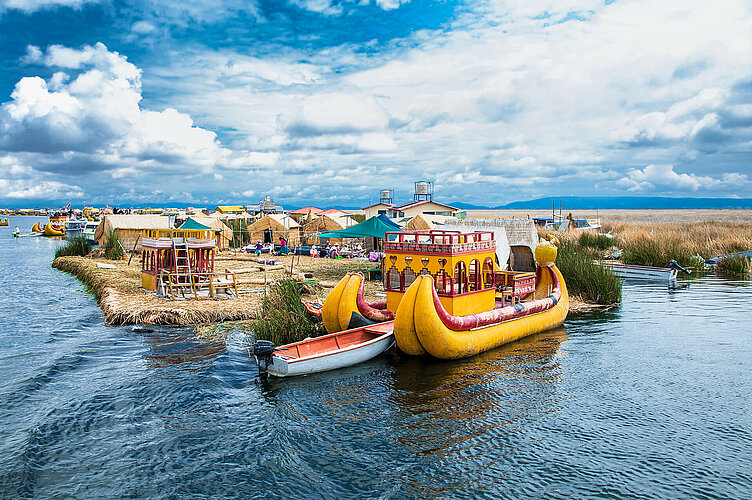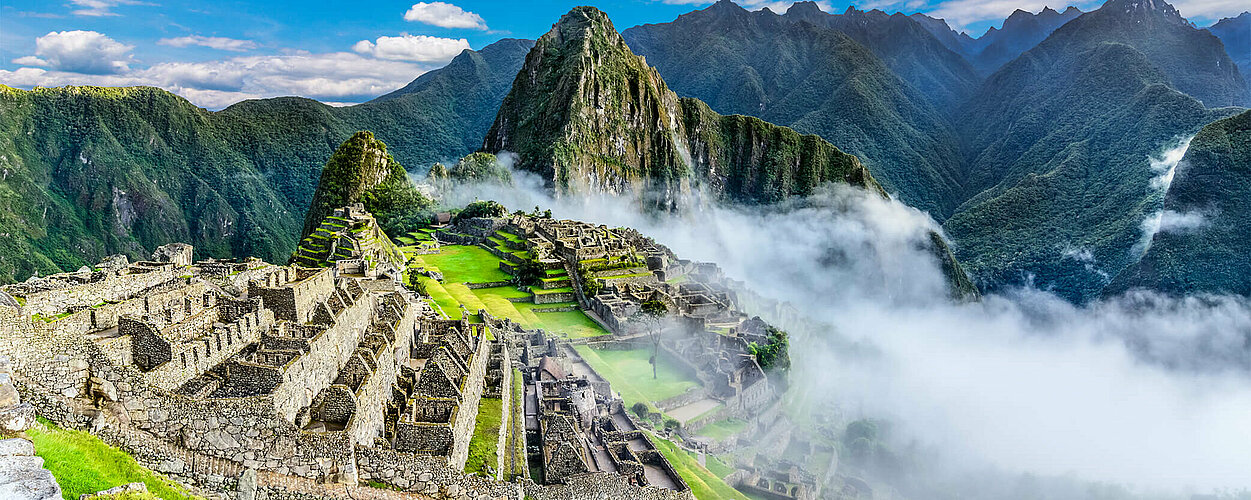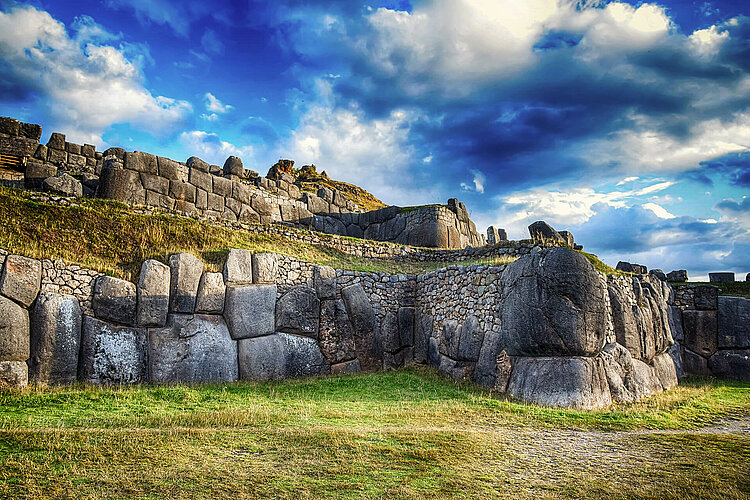Huascarán
Andes
The Andes stretch along the entire west coast of South America and, at 8,900 kilometers (5,530 mi), are the longest mountain range in the world. While the average elevation is 4,000 meters (13,123 ft), the highest peak, the Aconcagua in Argentina, measures 6,961 meters (22,838 ft). In fact, it is the highest mountain outside of Asia and is second only to Mount Everest in terms of topographic isolation (distance to the next highest peak). Despite its rugged nature, the Andes are far from being uninhabited and contain the four highest capitals in the world: La Paz, Quito, Sucre and Bogotá.
The two summits of Huascarán
The highest mountain in Peru is Huascarán. It is located in the Cordillera Blanca range and has two peaks: Huascarán Sur and Huascarán Norte. At 6,768 meters (22,205 ft), Huascarán Sur is the highest mountain in the global tropics and, due to its proximity to the equator, its summit has been calculated as the place with the lowest gravity in the world. Huascarán Norte reaches 6,654 meters (21,831 ft) and was first climbed in 1908 by the American Annie Smith Peck and two Swiss mountain guides. The first ascent of Huascarán Sur was made in 1932 by an Austro-German expedition led by Dr. Philipp Borchers.
Andean condor
One of the most striking animals in the Andes is the Andean condor. The mighty New World vulture is the heaviest bird of prey on the planet and also has one of the largest wingspans. In Peru, the condor is a national symbol and, as throughout the Andean region, of great cultural importance.
Facts
- Other names: Mataraju, Nevado Huascarán, Waskaran
- Mountain range: Cordillera Blanca, Andes
- Location: Ancash Region
- Elevation: 6,768 m (22,205 ft)
- First ascent: 1908 (Huascarán Norte), 1932 (Huascarán Sur)
- UNESCO World Heritage Site: Huascarán National Park (1985)
Huascarán Folding Card
The Andes and their wildlife are not only of inestimable natural value, but are also of great importance to Peruvian tourism and are an integral part of traditional folklore and thus national identity. This folding card contains a 500 Intis banknote issued in 1987 with the Huascarán on the reverse and a 1 Sol commemorative coin of the Threatened Wildlife of Peru series from 2017 featuring an Andean condor.
500 Intis
Obverse: Túpac Amaru II (1738-1781), leader of an indigenous rebellion against the Spanish colonial rule, national coat of arms
Reverse: Mountaineers climbing Huascarán, pre-colonial glyphs
| Dimensions: 150 x 75 mm (5.91 x 2.95 in) Material: Paper |
1 Nuevo Sol
Obverse: National coat of arms
Reverse: Andean condor and mountains, Casa de Moneda de Lima mint mark, series logo, “CÓNDOR ANDINO, vultur gryphus” (Spanish and Latin name of the condor)
| Weight: 7.32 g (0.02 lb) Diameter: 25.50 mm (1.00 in) Material: Copper-nickel-zinc |












